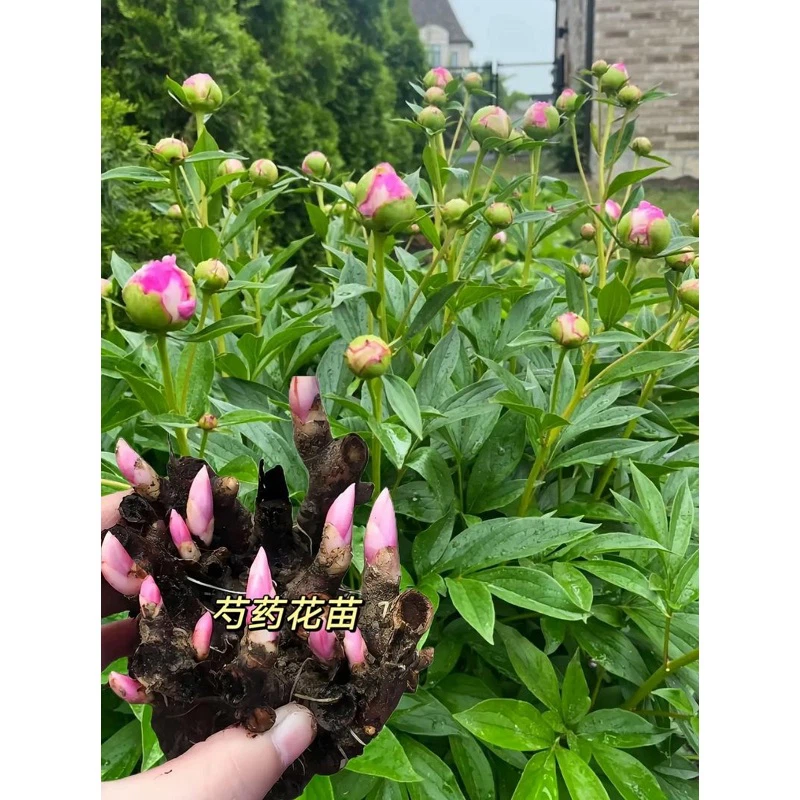When it comes to cultivating Orange Tree Peonies, one of the most frequently asked questions is: "How deep should I plant Orange Tree Peony?" As a dedicated supplier of Orange Tree Peonies, I've spent years studying and experiencing the nuances of growing these magnificent flowers. In this blog, I'll share my in - depth knowledge on the ideal planting depth for Orange Tree Peonies, along with some essential tips to ensure their healthy growth.
Understanding Orange Tree Peonies
Orange Tree Peonies are a captivating variety known for their large, showy blooms and vibrant orange - hued petals. They are a type of tree peony, which are different from herbaceous peonies in many aspects. Tree peonies are woody shrubs that can live for decades, sometimes even over a hundred years, given the right care. Their growth and development are highly influenced by the planting conditions, especially the planting depth.
The Ideal Planting Depth
The general rule of thumb for planting Orange Tree Peonies is to place the crown of the plant (the area where the roots meet the stem) at or just slightly below the soil surface. A depth of about 1 - 2 inches (2.5 - 5 cm) below the soil is usually recommended. This is because tree peonies have a unique root system and growth habit.
The roots of Orange Tree Peonies are relatively brittle and fleshy. If they are planted too deep, the plant may struggle to emerge from the soil, leading to weak growth or even death. The crown needs to be close enough to the surface to receive adequate sunlight and air circulation. Sunlight is crucial for the plant's photosynthesis process, which provides the energy it needs to grow and flower. Air circulation around the crown helps prevent the development of fungal diseases, which can be a major problem for peonies.
On the other hand, if the plant is planted too shallow, the roots may dry out quickly, especially during hot and dry periods. This can cause stress to the plant and reduce its ability to absorb water and nutrients from the soil.
Preparing the Planting Site
Before planting your Orange Tree Peony, it's essential to prepare the site properly. Choose a location that receives partial to full sun, preferably with some afternoon shade in hot climates. The soil should be well - drained, rich in organic matter, and have a slightly acidic to neutral pH (around 6.5 - 7.0).
Dig a hole that is wide and deep enough to accommodate the root system of the peony. The hole should be at least twice as wide as the root ball and deep enough to allow the crown to be at the correct depth. Mix some compost or well - rotted manure into the soil at the bottom of the hole to provide a nutrient - rich environment for the roots.
Planting Process
Once the hole is prepared, carefully remove the Orange Tree Peony from its container or packaging. Gently loosen the roots if they are tightly bound. Place the plant in the hole, making sure the crown is at the appropriate depth. Backfill the hole with the soil mixture, tamping it down gently around the roots to remove any air pockets.
Water the plant thoroughly after planting to settle the soil and help the roots establish contact with the surrounding soil. Apply a layer of mulch around the base of the plant, but keep it away from the crown to prevent moisture - related diseases.
Other Factors Affecting Growth
In addition to planting depth, several other factors can affect the growth and health of Orange Tree Peonies.


Watering: Orange Tree Peonies need regular watering, especially during the first few years after planting. However, they are also sensitive to over - watering. Water deeply but infrequently, allowing the soil to dry out slightly between waterings.
Fertilizing: Apply a balanced fertilizer in early spring, just as the new growth begins. Avoid using high - nitrogen fertilizers, as they can promote excessive foliage growth at the expense of flower production.
Pruning: Pruning is not usually necessary for Orange Tree Peonies, but you can remove any dead, damaged, or diseased branches in late winter or early spring. This helps maintain the plant's shape and health.
Different Color Varieties of Tree Peonies
Tree peonies come in a wide range of colors, each with its own unique charm. For those interested in exploring other color options, you can check out the White Tree Peony, Green Peony, and Black Tree Peony. These varieties can add a touch of elegance and diversity to your garden.
Conclusion
Planting Orange Tree Peonies at the correct depth is crucial for their long - term health and success. By following the guidelines mentioned above, you can ensure that your peony will thrive and produce beautiful blooms for many years to come.
As a supplier of Orange Tree Peonies, I'm committed to providing high - quality plants and sharing my knowledge with fellow gardening enthusiasts. If you're interested in purchasing Orange Tree Peonies or have any questions about their cultivation, I encourage you to reach out for a procurement discussion. I look forward to helping you create a stunning garden with these amazing flowers.
References
- Beale, John. "The Complete Guide to Tree Peonies." Gardening Press, 2018.
- Smith, Emily. "Tree Peony Cultivation: Best Practices." Horticulture Journal, Vol. 25, No. 3, 2020.






